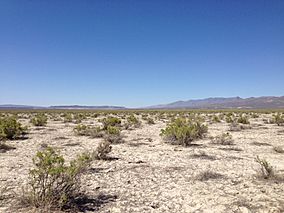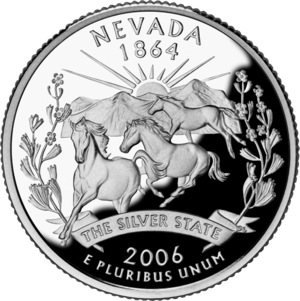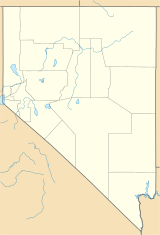Sheldon National Wildlife Refuge facts for kids
Quick facts for kids Sheldon National Wildlife Refuge |
|
|---|---|
|
IUCN Category IV (Habitat/Species Management Area)
|
|

Desert vegetation near the eastern edge of the refuge
|
|
| Location | Humboldt and Washoe counties, Nevada |
| Nearest city | Lakeview, Oregon |
| Area | 573,504 acres (232,089 ha) |
| Established | 1931 |
| Governing body | U.S. Fish and Wildlife Service |
| Website | Sheldon NWR |
The Sheldon National Wildlife Refuge is a 573,504-acre (232,089 ha) national wildlife refuge on the northern border of the U.S. state of Nevada. A very small part extends northward into Oregon. It is managed by the United States Fish and Wildlife Service (USFWS) as the Nevada component of the Sheldon-Hart Mountain National Wildlife Refuge Complex, which is headquartered in Lakeview, Oregon. The Sheldon Refuge is noted for its population of wild horses, now all removed, and The Virgin Valley Mining District for Black Precious Opals, the State Gemstone, still very active with multiple fee dig mines. A point within the refuge is also the farthest place in the contiguous US from a McDonald's restaurant, at just 115 miles (185 kilometers).
In 1931, the refuge was established under executive order to carry out three central goals: First, the refuge was to provide a habitat for the "antelope" (more properly called the pronghorn), an animal whose population was in decline during the early 1900s. Second, conservation efforts were put forth to protect native fish, wildlife, and plants. The refuge contains the very active and popular Virgin Valley Opal Mining District and was grandfathered in with all rights. Finally, the refuge was to serve as an inviolate migratory bird sanctuary.
Advocates characterize Sheldon as one of the few intact sagebrush steppe ecosystems in the Great Basin, one that hosts a variety of wildlife endemic to the unique environment. Desert fishes, greater sage-grouse, migratory birds, mule deer and the pygmy rabbit are all residents.
Description
The Sheldon National Wildlife Refuge occupies an arid zone of volcanic terrain. Opal miners have been active in the valley since 1906. Rockhounds search for precious opal, agates, petrified wood, Carnelian, obsidian, rhyolite, jasper, agate, hyalite opal, psilomelene. Geothermal hot springs provide some water to a swimming pool and shower house in the campground. The dominant ecosystem plant life consists of drought-tolerant species such as sagebrush, juniper, mountain mahogany, bitterbrush and aspen. The elevation ranges from 4,100 feet (1,200 m) to 7,200 feet (2,200 m) above sea level.

In this forbidding landscape lives a large population of free-range fauna, with the pronghorn - North America's fastest land mammal - being the best known and numbering around 3,500. There are also large herds of mustang, mule deer, and a small but self-sustaining population of bighorn sheep.
The bighorn is not strictly native to the Sheldon Refuge, having been extirpated there during the frontier era and reintroduced about 1930. The pronghorn "antelope" played a key role in the refuge's history, as approximately 94 percent of the current protected land area was originally set aside as the Charles Sheldon Antelope Range in 1936. The refuge is the home of an endemic fish species of limited geographic distribution, the Alvord chub. The population of Sheldon horses is the descendants of horses used by the U.S. Army. Harry Wilson was one of the ranchers that sold horses to the U.S. cavalry. When the Wilsons owned the Virgin Valley Ranch, they worked with the Army, which provided thoroughbred stallions that were bred with the Wilsons' standardbreds.
Nevada State Route 140 traverses the refuge from east to west and is the only paved road within the refuge. The nearest community of any size is Denio, Nevada, 14 miles from the refuge's eastern boundary. The nearest divided highway is Interstate 80 in Winnemucca, Nevada, approximately 100 miles to the south. County Road 8A connects to Cedarville Ca.


